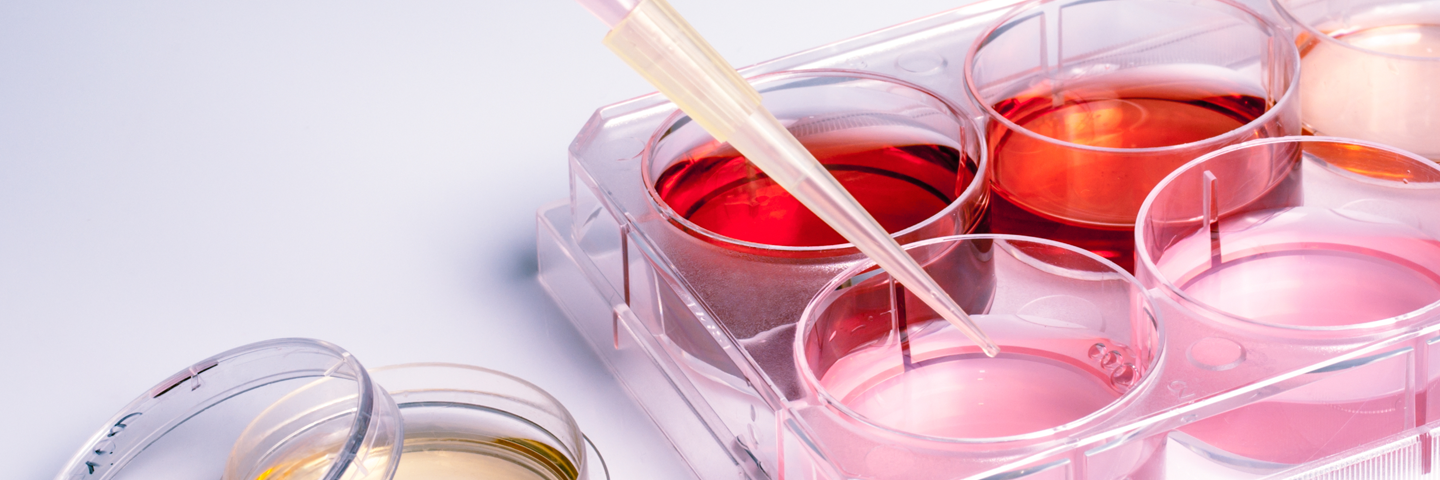
Cell Culture, an Overview
Cell culture is a fundamental tool used in areas as wide-ranging as drug development, toxicity testing, disease modeling, and regenerative medicine. This essential laboratory process covers the thaw, growth, propagation, and cryopreservation of cells that have been isolated from a donor organism. Other important aspects of cell culture include 3D culture, engineering cell lines, and cell line authentication.
Maintaining Cells
Subculturing, or passaging, is a critical part of banking and ensures the propagation of the cell line. Discover best practices how to subculture adherent and suspension cultures.
Discover best practicesReviving Cells
Best practices for reviving cells from cryopreservation are critical to ensuring unambiguous experimental results in basic research and industrial processes. Discover how to thaw cells and maintain viability.
Learn howIsolation and growth
Multiple methods of isolating cells for culture exist. These methods generally include either purification from blood or mechanical removal from a tissue and subsequent enzymatic digestion. Cells isolated via these techniques are then incubated in carefully maintained conditions, usually at atmosphere plus 5% CO2, 37oC, and 85-95% humidity. The cells are generally grown in plastic or glass vessels. A culture medium provides the cells with most of the nutrients such as amino acids, carbohydrates, vitamins, and minerals they need for metabolism. Additional growth factors and hormones are added to promote growth or attachment to the culture vessel, often via undefined adjuncts such as serum. Most freshly isolated, primary cell cultures undergo senescence, the process by which cells stop dividing after undergoing a certain number of cell divisions. To prevent this from occurring, the new cell line may be immortalized using techniques such as the vinyl chloride immortalization method or transfection with genes such as SV40 T antigen or human telomerase.
Biocontainment and Safety
Because of the invaluable nature and numerous applications of cell lines in life science research, it is critical that they are handled carefully to not only avoid contamination but to protect human safety.
Protect your safetyMycoplasma Contamination
Mycoplasmas frequently contaminate cell cultures. Discover how rapid and sensitive detection can prevent the costly effects of mycoplasma on your research projects.
Raise your standardsOnce founded, next steps
Once founded, the cell line can be propagated into several flasks and frozen. At this point, the creator of the cell line must perform some form of authentication and characterization that identifies it as a unique cell line. Depending on whether the cell line is of human, mouse, or another animal short tandem repeat (STR) profiling or cytochrome oxidase (CO)1 barcoding can be used. In addition, a full spectrum of sterility testing should be performed to identify possible mycoplasmal, bacterial, fungal, or viral contamination. The founding laboratory should also institute the seed stock principle to bank the cells. This method ensures the protection of original stock and the consistent availability of low-passage vials of cells via the creation of a master cell bank and working cell banks.
Expert tips for cell culture
Culturing cells can be challenging at times even for the expert culturist. With over 95 years of expertise with cell and microbial cultures, ATCC has acquired and developed a vast body of best practices to aid researchers at all levels of proficiency to maximize the return on their biomaterials investment. These best practices form the basis of several cell culture guides, webinars, and video tutorials that detail the initiation, expansion, and cryopreservation of continuous cell lines, primary cells, hTERT-immortalized primary cells, and organoids.
For specific protocols on how to culture your cells, download one of our culture guides:
STR Profiling for Mouse Cell Lines
While the authentication of human cell lines has been addressed with STR profiling, up until now the validation of mouse cell lines has been limited at the species level. Watch our on-demand webinar to explore the development of a new STR profiling method for the authentication of mouse cell lines.
Watch the WebinarDon't Risk Your Data
Misidentified and contaminated cell lines undermine your experimental results and discredit preclinical studies. Your research is too important to risk. Be a part of the movement to raise credibility in science and order your cell line authentication and mycoplasma testing services today.
Check your cells